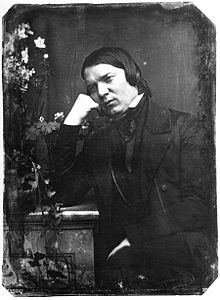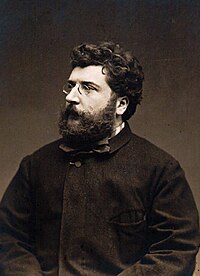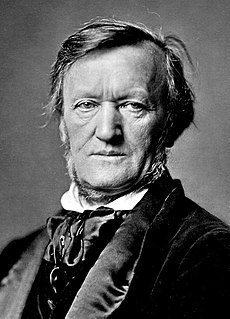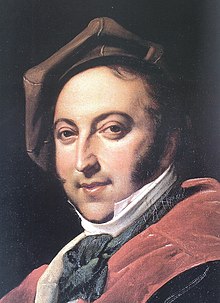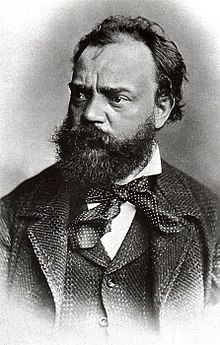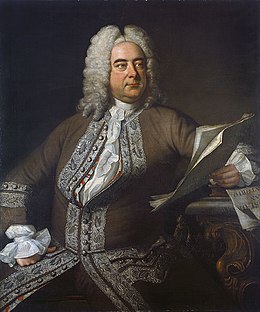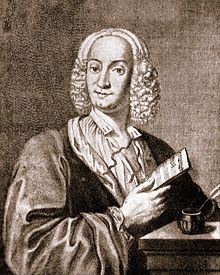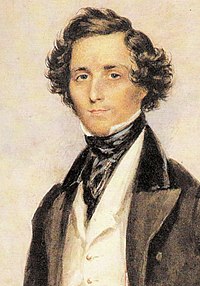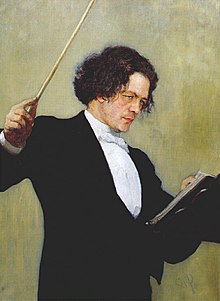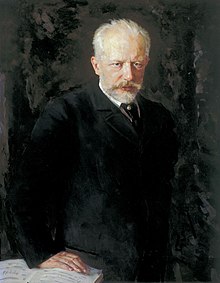Italian Original;
La violetta ch'en su l'erbetta apre al mattin novella di' non è cosa tutt'odorosa tutta leggiadra e bella?
Sì certamente
che dolcemente elle ne spira odori e n'empie il petto di bel diletto col bel de suoi colori. |
English translation;
The violet coming up in the meads blooms in the young morn -- say, isn't it completely fragrant graceful and lovely?
Yes, for certain
it lusciously breathes out its fragrance and fills the heart of the beloved one with the beauty of its hues. |
La Violetta (Claudio Monteverdi) by Simone Contaldi
12:04 AM |
Read User's Comments(0)
Gregorio Allegri's "Miserere"
11:47 PM |
Miserere, (full title: Miserere mei, Deus, Latin for "Have mercy on me, O God") by Italian composer Gregorio Allegri, is a setting of Psalm 51 (50) composed during the reign of Pope Urban VIII, probably during the 1630s, for use in the Sistine Chapel during matins, as part of the exclusive Tenebrae service on Holy Wednesday and Good Friday of Holy Week.
This hauntingly beautiful piece was allowed to be performed only at particular services and it was forbidden by the church to transcribe the music, thus adding to the mystery surrounding it. Writing it down or performing it elsewhere was punishable by excommunication.
According to the popular story (backed up by family letters), the fourteen-year-old Wolfgang Amadeus Mozart was visiting Rome, when he first heard the piece during the Wednesday service. Later that day, he wrote it down entirely from memory, returning to the Chapel that Friday to make minor corrections. Some time during his travels, he met the British historian Dr Charles Burney, who obtained the piece from him and took it to London, where it was published in 1771. Once the piece was published, the ban was lifted; Mozart was summoned to Rome by the Pope, only instead of excommunicating the boy, the Pope showered praises on him for his feat of musical genius.
References:
[1] http://en.wikipedia.org/wiki/Miserere_(Allegri)
[2] Grove's Dictionary of Music and Musicians, 5th ed., 1954, Eric Blom, ed.
[1] http://en.wikipedia.org/wiki/Miserere_(Allegri)
[2] Grove's Dictionary of Music and Musicians, 5th ed., 1954, Eric Blom, ed.
Favourite Classical music pieces – Fantasia on Greensleeves
5:58 AM |
Labels:
Anne,
Fantasia,
Greensleeves,
Gregorian,
Henry,
love,
Shakespeare,
Tudor,
Vaughan,
Williams
Do you know the English king Henry VIII? Yes, yes. The chap who tore England away from the influence of Vatican? Well, the classical music piece that I am going to discuss today is based on an English folk song and a tune which is widely believed by many to be a composition of England’s most known and arguably the most controversial king.
එංගලන්තයෙ රජ කළ 8වෙනි හෙන්රි රජු ගැන ඔබ දන්නවා ද? ඔව්, ඔව්. වතිකානුවෙන් එංගන්ත සභාව වෙන් කළ පුද්ගයා තමයි ඒ. අද මම විස්තර කරන්නට යන සම්භාව්ය සංගීත නිර්මාණය පදනම් වෙලා තියෙන්නේ 8වෙනි හෙන්රි රජු රචනා කළා යැයි සැලකෙන ඉංග්රීසි ජන ගීයක් හා එහි තනුව මතයි.
| King Henry VIII (Source: http://bit.ly/fTsaE8) |
Henry’s brother Prince Arthur was married to Catherine of Aragon; a political marriage to keep peace between Spain and Britain. But soon after the marriage Arthur died and the ruling dynasties, still wanting the peace to be kept, made Henry to marry Catherine. For this marriage to take place, the pope Julius II issued a papal dispensation saying that the passage Leviticus 20:21 which prohibits the marriage of a man to his brother's widow is not applicable for this marriage. However it is a well known fact that Henry has been in love with Catherine’s maid of honour Anne Boleyn since 1525. But Anne had rejected the king’s love. This song is said to be written at that time to Anne by the king.
හෙන්රි කුමාරයාගේ සහෝදරයා වුනු ආතර් කුමාරයා විවාහ වෙලා හිටියේ ස්පාඤ්ඤ කුමාරියක් වුනු ඇරොගන් හි කැතරින් කුමරියත් සමඟයි. මේ විවාහය ස්පාඤ්ඤය හා එංගලන්තය අතර සාමය රැකීම සඳහා කරපු දේශපාලන විවාහයක්. නමුත් ආතර් කුමාරයා විවාහවී සුළු කාලයකින් මරණයට පත්වුනා. ඒ විවාහය නිසා රටවල් දෙක අතර ඇතිව තිබුණු සාමය පවත්වා ගන්න ආතර්ගේ සහෝදරයා වුනු හෙන්රිට කැතරින්ව විවාහ කර දුන්නා. (නමුත් සහෝදරයාගේ වැන්දඹු භාර්යාව හා විවාහ වීම බයිබලයේ Leviticus 20:21 හි තහනම් කර තිබෙන නිසා එකල සිටි දෙවන ජුලියස් පාප්තුමා විශේෂ නියෝගයක් නිකුත් කර මේ විවාහය සඳහා ඒ ඡේදය අදාල නැති බව ප්රකාශයට පත් කළා.) හෙන්රි කැතරින්ගේ පරිවාර කාන්තාවන්ගෙන් අයෙක් වූ ඈන් බෝලීන් සමඟ ආදරයක් ගොඩනඟා ගැනීමට 1525 සිටම උත්සාහගත් බව ප්රසිද්ධ කරුණක්. කෙසේවෙතත් ඈන් මුල් කාලයේ රජුගේ ආදරය ප්රතික්ෂේප කළා. බොහොදෙනා විශ්වාස කරන පරිදි හෙන්රි රජු මේ ගීය රචනා කර ඇත්තේ එම කාලයේදීයි.
“Alas, my love, you do me wrong,to cast me off discourteously:For I have loved you for so long,
Delighting in your company.
Chorus:Greensleeves was all my joyGreensleeves was my delight,Greensleeves was my heart of gold,And who but my lady greensleeves.
Your vows you've broken, like my heart,
Oh, why did you so enrapture me?
Now I remain in a world apart
But my heart remains in captivity.
(Chorus)
If you intend thus to disdain,
It does the more enrapture me,
And even so, I still remain
your lover in captivity.
(Chorus)
Well, I will pray to God on high,
that thou my constancy mayst see,
And that yet once before I die,
Thou wilt vouchsafe to love me.
(Chorus)
Ah, Greensleeves, now farewell, adieu,To God I pray to prosper thee,For I am still thy lover true,Come once again and love me.”
| Queen consort Anne Boleyn (Source: http://bit.ly/gU62c4) |
Finally Anne yielded to the King’s advances and fell in love with him. In 1533 Henry declared that no Pope had the right to overrule a Biblical book and declared his marriage to Catherine to be void and married Anne in a secret ceremony, on 25 January 1533. This subsequently led to the great political and religious battle that tore England away from the Catholic church and made way to the establishment of the Anglican church which had the English monarch as the highest religious officer.
කාලයක් ගතවීමෙන් පසුව ඈන් කුමරියත් රජුට ආදරය කරන්න පටන් ගත්තා. 1533දී රජු විශේෂ ප්රකාශයක් නිකුත් කළා බයිබලයේ ඇති කරුණු වෙනස් කිරීමට පාප්තුමාටවත් අයිතියක් නැති බව සඳහන් කරලා. ඒ අනුව කැතරින් හා තමන් අතර සිදුවුනු විවාහය බල රහිත බව ඔහු ප්රකාශ කළා. 1533 ජනවාරි 25 වෙනිදා හෙන්රි රජු හා ඈන් බෝලීන් පෞද්ගලික උත්සවයක් පවත්වා විවාහ වුනා. මේ සිද්ධීන් වතිකානුව හා එංගන්තය අතර ඇති සබඳතා නරක අතට හැරවූවා. එයින් ඇතිවූ ආගමික හා දේශපාලන ගැටුම් කොතරම් උග්ර වුනාද කියනවා නම් අවසානයේ කතෝලික පල්ලියෙන් සම්පූර්ණයෙන්ම ඉවත් වුනු එංගලන්ත සභාව, ඉංග්රීසි රජු ඉහළම ආගමික නිලධාරියා වන ඇංග්ලිකන් ආගම නිර්මාණය කළා.
The embedded YouTube clip features the folk song GreenSleeves (Unaltered tune). The video footage is from the TV series “The Tudors” which is based on the life of King Henry VIII. The scenes highlight the affair between the king and Anne. From 1:09 to 1:15 you can see the marriage ceremony for the king and Catherine.
මේ සමඟ දක්වා ඇති YouTube සල දසුනේ තිබෙන්නේ වෙනස් නොකරන ලද ජන ගීයයි. එහි ඇති රූප රාමු ගෙන ඇත්තේ හෙන්රි රජු හා ඔහුගේ පවුලට සම්භන්ධ සිදුවීම් ඇසුරින් නිර්මාණය කරන ලද The Tudors නම් ටෙලිනාට්යයෙන්. ඈන් හා හෙන්රි රජු මුලු සල දසුන පුරා දැකිය හැකි අතර 1:09 සිට 1:15 දක්වා කැතරින් කුමරිය හා හෙන්රි රජු අතර විවාහ උත්සවය දැකගත හැකියි.
Four hundred years later, in 1934, the renowned English composer Ralph Vaughan Williams (12 October 1872 – 26 August 1958); who is well known for his efforts to collect, preserve and advance English folk music; adapted the tune and wrote the classical piece “Fantasia on Greensleeves".
හෙන්රි රජුගේ කාලයෙන් අවුරුදු හාරසියයකට පසු එනම් 1934දී සුප්රසිද්ධ ඉංග්රීසි ජාතික සංගීතඥයෙක් වන Ralph Vaughan Williams (12 October 1872 – 26 August 1958) [ඉංග්රීසි උච්චාරනය : /ˌreɪf ˌvɔːn ˈwɪliəmz/ රයිෆ් වො(ඔ)න් විලියම්ස් ] මේ ජන ගීය හා තනුව පදනම් කරගෙන “Fantasia on Greensleeves" යන සංගීත ඛණ්ඩය නිර්මාණය කළා.
 |
| Ralph Vaughan Williams (Source: http://bit.ly/f8JZit) |
Vaughan Williams’ first publication “Linden Lea" came when he was 30 years old. His early years were spent lecturing and editing the music by other composers. It was in 1904 that he would start his lifelong journey of finding and preserving English folk songs and carols, for which he is remembered in reverence even today. It was the time when most of the people in English countryside were becoming literate. This bloom of formal education was making the folk songs and carols extinct because the oral tradition through which they existed so far was becoming more and more obsolete. He travelled the countryside, transcribing and preserving many of these folk songs himself. Some of these preserved songs and tunes were later incorporated into the compositions done by him. “Fantasia on Greensleeves" is one such composition.
විලියම්ස් කල පළමු ප්රසිද්ධ සංගීත නිර්මාණය වුණ "Linden Lea" ඉදිරිපත් කළේ ඔහුට වයස 30ක් වූ විටයි. ඊට ප්රථම කාලය ඔහු වැය කළේ සංගීතය ඉගැන්වීමට හා පෙර සංගීතඥයන් සිදුකළ නිර්මාණ වැඩි දියුණු කිරීමටයි. ඔහුව සංගීත ලෝකයේ අමරණීය කරන්න හේතු වුන ජන ගී හා කැරොල් සංරක්ෂණ ව්යාපාරය ඔහු ඇරඹුවේ 1904දීයි. මේ කාලය වෙන විට තමයි එංගලන්තයේ ග්රාම්ය ප්රදේශ වලට සම්මත අධ්යාපනය පැතිරිලා ඒ ප්රදේශවල සාක්ෂරතාවය ඉහළ යන්නට පටන් ගෙන තිබුනේ. විධිමත් අධ්යාපනයේ පැතිරීමත් එක්කම කට වහරෙන් පැවත ආ ජන ගී හා කැරොල් ක්රමයෙන් අභාවයට යන්න පටන්ගෙන තිබුණා. විලියම්ස් ඒ ප්රදේශ වල සංචාරය කරමින් මේවා එකතු කරන්නත් සංරක්ෂණය කරන්නත් වුනා. මෙසේ සංරක්ෂණය කරන ලද ඇතැම් ගීත හා තනු ඔහුගේ පසු කාලීන නිර්මාණ වලටත් දායක කරගත්තා. “Fantasia on Greensleeves" එවැනි නිර්මාණයක්.
The embedded YouTube clip features “Fantasia on Greensleeves" performed by the La Sierra University Orchestra.
මේ සමඟ දක්වා ඇති YouTube සල දසුනේ තිබෙන්නේ La Sierra විශ්ව විද්යාලයේ සම්භාව්ය සංගීත කණ්ඩායම “Fantasia on Greensleeves" වාදනය කරන අන්දමයි.
A very interesting fact about Vaughan Williams is the fact that despite his tremendous contribution to church music, and the religious subject-matter of many of his works, was an atheist. Like many talented composers, Vaughan Williams too fell victim to the much fabled curse of nine symphonies and died three months after the premier of his most enigmatic Symphony No. 9 in E minor.
විලියම්ස් ගැන තිබෙන තවත් සිත් ගන්නා සුළු කරුණක් තමයි; ඔහු කොපමණ සේවයක් ආගමික සංගීතයට කළත් පෞද්ගලික මතවාදය වශයෙන් ඔහු අදේවවාදය ඇදැහීම. තවත් බොහෝ දක්ෂ සංගීතඥයන් මෙන්ම විලියම්ස්ද ප්රසිද්ධ සංගීත සංධ්වනි 9යෙහි සාපයට ගොදුරු වුනා. එනම් ඔහුගේ ගුප්තම සංධ්වනිය වන 9වන සංධ්වනිය ඉදිරිපත් කොට මාස තුනකින් ඔහු මරණයට පත් වුනා.
The embedded YouTube clip features a Gregorianized version of the song GreenSleeves. This features the artist Dante Gabriel Rossetti’s painting "My Lady Greensleeves" (1864).
මේ සමඟ දක්වා ඇති YouTube සල දසුනේ තිබෙන්නේ ග්රෙගෝරියන් සංගීත සම්ප්රදායට හරවන ලද GreenSleeves ගීතයයි. ඒ සමඟ ඇති රූපයේ දැක්වෙන්නේ චිත්ර ශිල්පී Dante Gabriel Rossetti විසින් අඳින ලද "My Lady Greensleeves" (1864) චිත්රයයි.
Some scholars challenge the popular belief that the song was composed by King Henry VIII. They point out that the style involved in the composition is Italian. This style of composition came to England in Elizabethan times well after the death of King Henry VIII. N.B.: the “Elizabethan times” refers to the time Queen Elizabeth the first, who was the daughter of King Henry VIII and Anne Boleyn, was ruling England. She ascended the throne after her half-brother Edward VI (Son of Queen consort Jane Seymour by King Henry VIII) and her half-sister Mary I (Daughter of Queen consort Catherine of Aragon by King Henry VIII).
මම මෙහිදී ඉදිරිපත් කළේ මේ ගීතය ගැන ඇති වඩාත් ප්රසිද්ධ මතය වන, “මේ ගීතයේ නිර්මාතෘ අටවෙනි හෙන්රි රජුය“ කියන මතයයි. නමුත් සමහර උගතුන් කියන හැටියට එය එසේ වෙන්න බැහැ. ඔවුන් පෙන්වා දෙනවා මේ ගීයෙහි වචන භාවිතය වඩාත් සමීප වෙන්නේ ඉතාලියානු සම්ප්රදායටයි කියා. මේ සම්ප්රදාය එංගන්තයට පැමිණියේ අටවෙනි හෙන්රි රජුගේ මරණයෙන් බොහෝ කලකට පසුව පළවෙනි එළිසබෙත් රැජිනගේ රාජ්යකාලයේයි. පළවෙනි එළිසබෙත් නමින් රජවුනේ අටවෙනි හෙන්රි රජුගේත් ඈන් බෝලීන් රැජිනගේත් දියණීයයි. ඇය රජ කමට පත්වූයේ ඇගේ අඩ සොයුරු හත්වෙනි එඩ්වඩ්ගේත් (අටවෙනි හෙන්රි රජුගේත් Jane Seymour රැජිනගේත් පුත්රයා) හා අඩ සොයුරිය පළවෙනි මේරිගේත් (අටවෙනි හෙන්රි රජුගේත් ඇරගොන්හි කැතරින් රැජිනගේත් දියණීය) පාලන කාල වලින් පසුයි.
| William Shakespeare (Source: http://bit.ly/e8Ts7o) |
However, the fact that folk tune Greensleeves was quite popular in England can be proved by the reference made to it by none other than the great Bard. In Shakespeare's “The Merry Wives of Windsor” the character Mistress Ford refers to the tune not once but twice. And later in the plot Falstaff exclaims; “Let the sky rain potatoes! Let it thunder to the tune of 'Greensleeves'!”. Apart from that the Christmas carol “What Child Is This?” written by William Chatterton Dix in 1865 is also set to the tune of Greensleevs.
කෙසේ වෙතත් Greensleeves තනුව එංගන්තයේ බොහෝ ප්රසිද්ධව තිබූ බවට සාධක තිබෙනවා. උදාහරණයක් විධියට විලියම් ශේක්ස්පියර්ගේ “The Merry Wives of Windsor” නම් නාට්යයේ Mistress Ford චරිතය දෙවරක්ම මේ තනුව ගැන සඳහන් කරනවා. එම නාට්යයේම පසු තැනක Sir John Falstaff නම් චරිතය “Let the sky rain potatoes! Let it thunder to the tune of 'Greensleeves'!” කියා ප්රකාශයක් ද කරනවා. William Chatterton Dix විසින් රචනා කරන ලද “What Child Is This?” (1865) නම් කැරොල් ගීතය ලියා ඇත්තේද Greensleevesහි තනුවට අනුරූපවයි.
Whatever said and done, Greensleeves stands as a classical monument for unrequited love in western literature. The tragic end, that the story of the supposed heroes after whom the song is known for had, had but small effect on the message given by the piece. It is undisputed that Fantasia on Greensleeves is the piece that Vaughan Williams is most remembered for within the circles of ordinary men.
මොන මතවාද තිබුණත්, ඉංග්රීසි සම්භාව්ය සාහිත්යයෙහි දැන් Greensleeves ගීතයට විප්රලම්භ ශෘංගාර කාව්යයක් ලෙස ඇති පිළීගැනීම අවිවාදිතයි. හෙන්රි රජුගේ හා ඈන් රැජිනගේ ප්රේමයට අවසානයේ අත්වූ ඛේදනීය ඉරණම ගීතයෙන් දෙන පණිවිඩයෙහි අදහස මොට කරන්න හේතුවුනේ නෑ. විශේෂයෙන්ම සම්භාව්ය සංගීත රසිකයන් නොවන සාමාන්ය ජනතාව අතර වො(ඔ)න් විලියම්ස්ගේ නම රැඳෙන්න හේතුවුනේ Fantasia on Greensleeves සංගීත ඛණ්ඩය බවත් සත්යයක්.
Labels:
Anne,
Fantasia,
Greensleeves,
Gregorian,
Henry,
love,
Shakespeare,
Tudor,
Vaughan,
Williams
Favourite Classical music pieces – Für Elise
“Had I the heavens’ embroidered cloths,Enwrought with golden and silver light,The blue and the dim and the dark clothsOf night and light and the half light,I would spread the cloths under your feet:But I, being poor, have only my dreams;I have spread my dreams under your feet;Tread softly because you tread on my dreams.”
wrote W.B. Yeats to the love of his life, Maud Gonne. Love is a strange phenomenon that can make mediocre men in to poets, artists and composers. What happens when a great poet, artist or a composer fall in love?
ඉහත කවිය W.B. Yeats කවියා Maud Gonne වෙත ඇති සිය ආදරය ප්රකාශ කිරීමට ලියූ කවියක්.ආදරයට පුළුවන් විශේෂ දක්ෂතා නැති සාමාන්ය මනුෂ්යයෙක් පවා කවියෙක්,චිත්රශිල්පියෙක් හෝ සංගීතඥයෙක් කරන්න.ඉතින් සහජයෙන් ම දක්ෂ කවියෙක්,චිත්රශිල්පියෙක් හෝ සංගීතඥයෙක් ආදරයෙන් බැඳුනාම මොකක් සිද්ධ වෙයිද?
As evident by the above poem, it inspires them to create miraculous compositions. The piece of music that I wish to write about today is the result of a maestro falling in love.
එයින් ඔවුන්ව යොමු කරනවා මේ තියෙන කවිය වගේ අතිවිශිෂ්ඨ නිර්මාණ බිහිකිරීමට.අද මම විස්තර කරන්න යන්නේ ඉතිහාසයේ හිටපු මහා සංගීතඥයෙක් ආදරයෙන් බැඳීම නිසා බිහිවුනු නිර්මාණයක් ගැන.
| Ludwig van Beethoven (Source: http://bit.ly/5qVOr) |
In the time period 1770- 1827 lived a German composer and pianist. He is known to the masses not only for his brilliant compositions but also for the rather unique bits of trivia that circle his life. (Gossip, if you may.) He was none other than Ludwig van Beethoven, who of course is my favourite composer of all time.
මේ සංගීතඥයා ජීවත් වුනේ 1770-1827 කාල පරාසයේ ජර්මනියේ.මොහු දක්ෂ පියානො වාදකයෙක්ද වුනා.මොහුගේ ප්රසිද්ධියට මොහු අතින් සිදුවුනු අතිශය සුවිශේෂී නිර්මාණ වගේම මොහුගේ පෞද්ගලික ජීවිතයේ රසමුසු තැන්ද ඉවහල් වුනා.ඔහු තමයි මගේ ප්රියතම බටහිර සංගීතඥයා වෙන Ludwig van Beethoven[ඉංග්රීසි උච්චාරණය: /ˈlʊdvɪɡ væn ˈbeɪt.həʊvən/ (ලුඩ්විග් වෑන් බේතෝවෙන්), ජර්මන් උච්චාරණය: [ˈluːtvɪç fan ˈbeːt.hoːfn̩] ලුඩ්විෂ් ව’(ෆ)න් බේතෝ(ඕ)ෆන්].
Für Elise or in musical jargon, “the Bagatelle No. 25 in A minor (WoO 59 and Bia 515) for solo piano.”, is the most popular piece composed by the maestro. The German name “Für Elise” translates in to English as "For Elise". Who this Elise was, remains a mystery to this day.
Für Elise, සංගීත භාෂාවෙන් කියනවා නම් “the Bagatelle No. 25 in A minor (WoO 59 and Bia 515) for solo piano.”, තමයි බේතෝවෙන්ගේ වඩාත්ම ලෝක ප්රසිද්ධ සංගීත නිර්මාණය.“Für Elise” කියන ජර්මන් නමේ තේරුම තමයි “එලීස් වෙනුවෙනි” කියන එක.මේ එලීස් කියන්නේ කාටද කියන එක අදටත් නොවිසඳුනු ගැටළුවක්.
The most interesting bit of information about this piece apart from its unparalleled beauty and simplicity is the hidden message in the first three notes of the score. The three notes gives out the name “Elise” in two different ways. The first three notes are, E-D♯-E, which are enharmonically equivalent sounds to E-E♭-E. The E♭ is called Es in German and is pronounced as "S". Add the non-notational “LI” and you get E-(L)-(I)-E♭-E (E-li-es-e -> Elise). The second way to get this is by singing the first several notes of the composition with note names. “Dis” is the pronunciation for D♯. So we end up with “E-Dis-E-Dis-E”, which is a mondegreen (a phrase that sounds similar to another phrase so far that mishearing or misinterpretation of that phrase, when the other is pronounced or Vice-versa, is highly likely) to the name "Elise".
මේ සංගීත නිර්මාණයේ සරල බව හා අලංකාරයට අමතරව මෙහි තිබෙන තවත් සිත් ඇදගන්නා අංගයක් තමයි නිර්මාණයේ මුල් ස්වරතුනේ සඟවා ඇති පණිවිඩය.මුල් ස්වර තුනෙන් “එලීස්” කියන නම දෙවිධියකට කියවෙනවා. මෙහි මුල් ස්වර තුන වෙන්නේ, E-D♯-E මේ ස්වර නාදමය වශයෙන් ගත්තාම E-E♭-E කියන ස්වර තුනට සමානයි.ජර්මන් භාෂාවෙන් E♭ කියවන්නේ “Es” විධියට.ඒ කියන්නේ ඒක වර නැගෙන්නේ “එස්” කියලා. දැන් සංගීතයට අයත් නැති “LI” අකුරු දෙකත් එකතුකලාම ලැබෙනවා E-(L)-(I)-E♭-E (E-li-es-e -> Elise). දෙවෙනි ක්රමය තමයි මුල් ස්වර තුන ඒවායේ නම් වලින් කියවීම. D♯ කියන ස්වරය කියවන්නේ “Dis” කියලා. ඉතින් මේ ස්වර කියවෙන්නේ “E-Dis-E-Dis-E” (ඊ-ඩිස්-ඊ-ඩිස්-ඊ) විධියට. ශබ්ධමය වශයෙන් මේක “එලීස්” කියන නමට ආසන්නයි.
Beethoven had at least three romantic affairs, none of which resulted in marriage. (He died a bachelor) Of these three affaires, some speculate Therese Malfatti von Rohrenbach zu Dezza (1792–1851) to be the inspiration of the music piece claiming that the title “Für Elise” to be a faulty transcription the title “Für Therese" by Ludwig Nohl who discovered the score and published it 40 years after the composer's death.Some scholars argue that this was written for the German soprano Elisabeth Röckel (1793–1883) who indeed was known in Vienna as "Elise" and was a close friend of Beethoven's since 1808.(Not one of the said three affairs)
බේතෝවෙන් තෙවරක් තෙවරක් ආදරයෙන් බැඳුනු බවකුයි ඉතිහසෙයේ සඳහන් වෙන්නේ.ඒත් මේ එකක් වත් විවාහයෙන් කෙළවරවුනේ නෑ.සමහර විද්වතුන්ගේ අදහසේ හැටියට බේතෝවෙන් මේ නිර්මාණය කර තිබෙන්නේ මේ කාන්තාවන් තිදෙනාගෙන් එක් අයෙක් වෙන Therese Malfatti von Rohrenbach zu Dezza (1792–1851) වෙනුවෙන්. ඔවුන් කියන හැටියට මේ නිර්මාණයේ නියම නම “Für Therese”.මේ නම් මාරුව සිද්ධවුනේ Ludwig Nohl ගේ වරදින් කියලා තමයි ඔවුන් කියන්නේ.Ludwig Nohl තමයි මුළින්ම මේ නිර්මාණය බේතෝවෙන්ගේ අත්පිටපත් අතරින් සොයාගෙන ප්රසිද්ධ කළේ.ඒ වෙන කොට බේතෝවෙන්ගේ මරණය සිද්ධවෙලාත් අවුරුදු 40ක් ගතවෙලා ඉවරයි.වෙනත් විද්වතුන් පිරිසකගේ අදහසේ හැටියට මේ නිර්මාණය කෙරිලා තියෙන්නේ ජර්මන් ගායිකාවක් වූ Elisabeth Röckel (1793–1883) සඳහායි.අර මුලින් සඳහන් කළ තිදෙනාගෙන් අයෙක් නොවුනත් මැය 1808 සිට බේතෝවෙන්ගේ ළඟම මිතුරියක්ව සිටි අතර වියෙනා නුවර දී ඇය හැඳින් වූවේත් “එලීස්” යන නමින්.
You can listen to the famous piece from the embedded YouTube video. Like in the previous post, Air on the G String, the video clearly shows the music notation and spatial note variation. Once you have listened to it, you will know from where you have heard this before. The extreme simplicity and popularity of this tune has had done both good and bad to it. While it took this piece to the ears of the people who are not fans of classical music, it also made them make mental links of this piece of love to very uncharacteristic actions and objects such as reversing vehicles and bread sellers. That exactly is the reason why I first gave you the piece’s background and then gave you the piece to hear. I was hoping that now because you know about the piece, you can enjoy it for what it really was.
පහත ඇති YouTube සල දසුනෙන් මේ නිර්මාණයට සවන්දෙන්න ඔබට පුළුවන්. කලින් මම ලියු Air on the G String හි සල දසුනේ වගේම මෙහිත් ස්වර ප්රස්ථාරය හා රූපක ස්වර විසිරීම පෙන්වා තිබෙනවා.මෙයට සවන් දුන් පසු ඔබ මෙය කළින් අසා තිබෙන්නේ කොහේදීදැයි මතක් වේවී.මේ නිර්මාණයේ ඇති සරල බව හා ජනප්රියත්වය එයට යහපත් මෙන්ම අයහපත් ප්රතිඵලද ගෙන ආවා.යහපත් අතට ගත් කළ එය දැන් සම්භාව්යප සංගීත රසිකයන්ට පමණක් හුරුපුරුදු නාද රටාවක් නොවෙයි.නමුත් අනිත් අතට සම්භාව්යස සංගීත රසිකයන් නොවන අය එයට සවන් දුන් විට දැන් ඔවුනට මතක් වෙන්නේ පසුපසට යන වාහනයක් හෝ පාන් වෙළෙන්දෙක්.අන්න ඒ නිසා තමයි මම මුළින් ඔබට මෙහි ඉතිහාසය කියා දී ඊට පසු එය අසන්නට සැලැස්වූයේ.දැන් මේ නිර්මාණය ගැන ඔබ දන්නා කරුණු නිසා ඒදෙස වෙනත් කෝණයකින් (මුළින්ම එය ඇසූ අයෙකුට දැනෙන හැඟීමෙන්) ඒ දෙස බලන්නට ඔබට හැකියැයි සිතමි.
P.S.:- On another sad note, the above mentioned poem of W.B. Yeats didn’t win him the love of Maud Gonne either.
ප.ලි. : තවත් දුක්බර සිද්ධියක්. ඉහත සඳහන් කළ කවියෙන් Maud Gonne ගේ ආදරය දිනා ගන්නට W.B. Yeats ට හැකි වූයේද නැහැ.
Favourite Classical music pieces – Air on the G string
4:03 AM |
Labels:
Air,
Bach,
basso continuo,
BnS,
Brandenburg concertos,
cappella,
Classical music,
G string,
oboe,
piano,
timpani,
Trumpet,
viola,
violin,
Voyager,
Wilhelmj,
X-Files
Since I promised to bring you my favourite classical pieces, I thought of starting with my all time favourite Classical Music piece.
Before going in to detail about this piece, I’ll give you proof for the fact that you are familiar with this tune. Yes. As you might have guessed from the information from my previous post, this tune was used as the basis for their début single "Wasanthaye" by Bathiya and Santhush. You can listen to their adaptation from the embedded Youtube clip to the right. | |
And now please do listen to the original piece from the second embedded Youtube clip. I particularly choose this clip from Youtube because it clearly shows the music notation and spatial note variation. (Hit the full screen button if you do not have supper eyes that can see all of these details in the tiny embedded box) |
 |
| Johann Sebastian Bach Source http://bit.ly/yF9NS |
Now let’s look into some background information about the piece. As the post title says, it is commonly known as “Air on the G string”. This is an adaptation of the Orchestral Suite No. 3 in D major, BWV 1068 by the baroque era German Composer Johann Sebastian Bach. (31 March 1685– 28 July 1750). Bach is greatly considered to be the musician who brought the music of Baroque era to its prime. His other notable works include Brandenburg concertos , St Matthew Passion, the St John Passion, the Magnificat, The Musical Offering, and etc. [Note: If you are an X-Files fan, you might remember on the first episode of Season 2, the “Voyager Golden Record” which was included in the Voyager spacecraft hoping to be discovered by aliens is mentioned. This Voyager Golden Record contained Bach’s Brandenburg concertos.] It is widely believed that Bach composed this between 1717 and 1723 in Leipzig for his patron Prince Leopold of Anhalt.
 |
| August Wilhelmj Source http://bit.ly/bYdm9X |
In 1800s Another German composer named August Wilhelmj took second part (Air) of the Orchestral Suite No. 3 in D major and transposed the key down to C major, Which effectively made it possible to play the piece using only one string of the violin namely, the G string. Hence comes the name; “Air on the G String”. Bach wrote the original piece to be played using a Trumpet , a timpani, an oboe, a violin, a viola with a basso continuo (an accompaniment from a composed bass part by playing the bass notes and improvising harmony above them). Wilhelmj rendered the derived composition to be played by a violin and a piano.
Throughout the ages this piece of music has been used in various places and has been adapted by many and rendered in to different faces and shapes. (Even most of the toy organs have this integrated in to them.) I still tend to treasure the original version above all. As far as the adaptations are concerned, I find the following cappella version most soul soothing.
Favourite Classical music pieces – Introduction
2:44 AM |
Labels:
Beethoven,
BnS,
bread,
Classical music,
Debussy,
Friends,
Introduction,
Mozart,
report,
Twilight,
university
 |
| (Source : http://bit.ly/aFlrJc ) |
Now I am sure that you are wondering “What in the blessed world does the title have to do with the previous paragraph” (Not in exact same words though) To clear things out I shall explain my motivation henceforth.
If I ask you “Have you ever listened to classical music?” I am sure most of you would say “No”. But the truth is even if you are a hardcore rock fan; you most definitely have heard classical music pieces. Let me give you some examples.
- Have you ever heard the tune that most of the three-wheeler bread sellers use? That is “Für Elise” by Beethoven.
- Have you ever listened to the closing credits of the cartoon “Denis the Menace” (දඟයා)? That is Eine kleine Nachtmusik” by Mozart.
- Have you ever watched Twilight? (I know that the question raised a few eyebrows J) There Edward and Bella listens to “Clair de Lune” by Debussy.
- Now for more controversy! Have you ever listened to “Wasanthaye” by Bathiya and Santhush? Yes? Well I am not going to tell what classical piece that is, because it would be the subject of my next blog post. (If I ever write it that is)
Now I shall explain what triggered a blog post all of a sudden. Well the story goes like this,
The other day I was listening to Beethoven’s Für Elise at my work place. One of our graphics designers heard the tune coming from headphones (I listen to music very loud of-course) and inquired, “ඔය අර චූන් පාං සින්දුව නේද?” (“Isn’t it the cheerful bread song?”). Needless to say I was quite shocked. He and most of the people that have heard this tune from the bread sellers, has created a mental connection between the two.
 |
| ( Source : http://bit.ly/c3mYRI ) |
Labels:
Beethoven,
BnS,
bread,
Classical music,
Debussy,
Friends,
Introduction,
Mozart,
report,
Twilight,
university
Subscribe to:
Posts (Atom)
